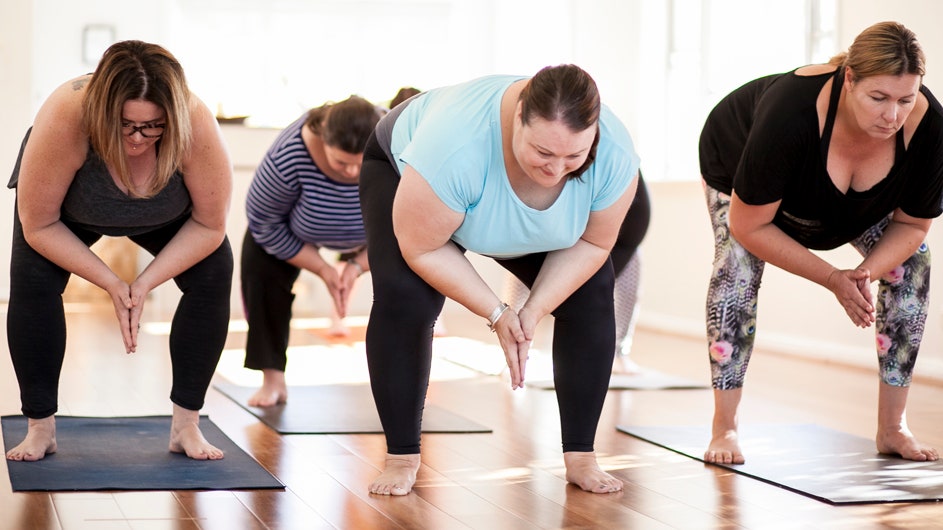
Many people suffering from migraines report success in yoga for their migraine treatment. Clinical trials show that yoga is effective in relieving migraines. Patients were able to reduce stress and improve their cardiac autonomic equilibrium, as well as the sympathetic drive. These results were replicated in several studies. You can read more about yoga's effectiveness as a migraine treatment here.
One of the most common poses for treating migraines is Legs Up the Wall. This pose involves raising your legs toward the ceiling. This allows blood to flow in the opposite direction to downward dog. You must lie flat on your stomach, your knees facing upwards. Place your arms by your sides. Place your arms at your sides. This position helps to relieve pain and lengthen the spine.

Bridge Pose is another favorite yoga pose for sufferers of migraines. Bridge Pose is a great yoga pose for relieving tension in the upper body. It also increases blood flow to the brain. The bridge pose requires you to lie on your stomach with your knees raised. For 15 to 30 minutes, hold the bridge position. Increase the time you spend in this position if it helps. This will help you live a happier life. These practices can be incorporated into your daily life if you suffer from migraines.
Child's pose relieves tension in the upper body and increases blood flow to the head. Bridge pose is particularly beneficial, as it increases blood flow towards the head. You can do this pose on your back, while keeping your eyes closed. Keeping your knees slightly bent will help you reach the shins and feet and relax the upper body. To prevent migraines, it is recommended that you practice this pose multiple times per day.
It is an excellent way to find a yoga headache relief. It reduces pain and helps to restore the cardiovascular system. The downward dog is an excellent way to relieve a throbbing headache. It activates the pressure point in the neck and heads. It is a great way to combat a migraine. You can use it as a bedside practice for migraines. If you don't feel comfortable lying on your back, you can try the pose from a chair.

While yoga may not be effective as a standalone treatment for migraines, it is a great way to reduce the frequency and intensity of migraines. It can also be used as an adjunct to modern therapies. Researchers believe yoga can improve overall well-being. It can be used to supplement modern medication, the study authors suggest. You may be surprised to find out that yoga has positive effects on migraine sufferers. You may even be able stop migraines from happening altogether.
FAQ
Why is mental health important?
Mental health is crucial for everyone. Mental health is vital for anyone. It is important to keep your mind healthy.
When our minds aren't in the best place, our bodies start to show signs and symptoms of stress. This could cause problems in the body such as backaches, stomachaches, headaches and stomach pains. Our bodies and minds must be well looked after.
Is mental health as important as work?
It is vital that everyone has a good mental health, especially those who work. Relaxing at work can make you feel more relaxed. You might try going out with friends or taking a walk outside.
Talk to your boss or supervisor if you feel stressed. They may be able to suggest ways to relieve your stress.
Your physical health is important too. Eat well, exercise and get enough sleep are all important.
What is Positive Psychology? Why is it Important?
Positive psychology looks at what makes us feel better. Positive psychology aims to make people happier, healthier, more wiser, and better through self-improvement.
There are two types of positive psychology: trait positive psychology and process positive psychology. Trait positive psychology studies how people naturally tend to behave. Study positive psychology to learn how you can use specific strategies in order to achieve your goals.
Why is mental health so important?
Work, play, learn and love. Mental health is about our overall well-being. When we refer to mental health, we mean the physical, psychological and spiritual factors that have an impact on us every day. The good news? There are many ways to take care of yourself mentally. It doesn't take all of the above at once. Just start somewhere.
The first step towards improving your mental health is understanding where you stand now. Take this quiz to find out if you're doing enough to support your mental health. If your score is low, you may want to make some lifestyle changes.
Congratulations! Let's now look at what you can do to maintain or improve your mental health.
-
Get enough sleep Your brain will stay sharp and energized if you get enough rest. Try to get 7-8 hours of sleep per night, which is about the amount recommended by the American Academy of Pediatrics (AAP).
-
Exercise Regularly. Exercise releases endorphins into your body, which makes you happy and less likely to stress. Aim for 30 minutes of exercise five times per week.
What causes mental health problems in adolescents
Adolescence allows us to begin to form our identities. We discover who and where we belong as individuals.
During this time, we also develop new friendships and romantic relationships. These experiences can lead to stress.
Stress is normal. But if stress becomes more severe than usual, you should seek medical help.
Although you may think you can handle it all on your own sometimes you need someone to talk to.
During times when you are stressed, your friends and family can help. You may find them able to offer support and help you deal with stress.
You could try meditation or exercise. Both can help with stress reduction.
You can also join a group like a church, sports team or church. You'll meet new people, make new friends.
What are the 5 ways to improve wellbeing?
The state of being well is defined as the "state of physical, mental and spiritual well-being." Several factors affect our well-being, such as family, work, health, relationships, community, environment, education, finances, etc. Your first step in improving well-being and your quality of life is to identify which areas need improvement. Then, try to change these things for the better.
Here are five ways to improve your well-being:
-
Exercise - It boosts endorphins, which can make us happier.
-
Sleep - Sleeping more than 6 hours per night decreases stress and anxiety.
-
Nutrition - Eat healthy foods, such as fruits and veggies, to boost your mood.
-
Meditation – Regular meditation reduces anxiety and stress.
-
Socialization – Spending time with family and friends makes us feel happy.
Statistics
- Appropriate nutrition and exercise are likely among the most efficacious and cost-effective positive mental health interventions. (ncbi.nlm.nih.gov)
- Neuropsychiatric diseases are the leading cause of death and disability in the U.S., accounting for 18.7 percent of all years of potential lifespan loss and premature mortality.
- Similarly, for positive mental health, there is likely to be substantial agreement about some typical components (e.g., resilience to stress) 6, and controversy about more atypical components (e.g., career consolidation). (ncbi.nlm.nih.gov)
- Similarly, while there is some agreement about the boundaries of typical mental disorders 2, there is likely less agreement about those for positive mental health. (ncbi.nlm.nih.gov)
- According to the National Alliance of Mental Illness (NAMI), one in five Americans experiences mental health issues which translates to more than 40 million adults a year. (doctorondemand.com)
External Links
How To
Why Is Mental Health Essential, And What Steps Can You Make To Improve It
Mental health refers primarily to your mental state and emotional well-being. It can affect how you feel, think and act, how you relate to others, how you sleep, eat, work learn, play, or just enjoy your life.
Mental health is an important topic for everyone. Depression is often referred to when talking about mental health. Depression is a severe illness that affects millions every year.
Depression is also known as clinical depression because it requires treatment by a medical doctor. There are several types of depression.
According to the National Institute of Mental Health, depression is "a common mood disorder that causes depression most of the time, a loss of interest in nearly all activities, feelings of guilt, low self-worth, disturbed sleep, appetite, poor concentration, thoughts of suicide or death."
People experience depression in various ways. People may feel sad, helpless, irritable and anxious. They might also feel worthless, guilt, worthless or tired. Others may feel depressed, anxious, restless, agitated or fearful. Still, others may feel nothing at all.
Depression is treatable. Depression can be managed with medications, psychotherapy and lifestyle adjustments. Depression can lead to problems at home, school and work if it is not treated.
Depression is more common in women than it is in men, but both men and women are affected. Depression is the most common cause of disability for both men and women between 15 and 44 years old.